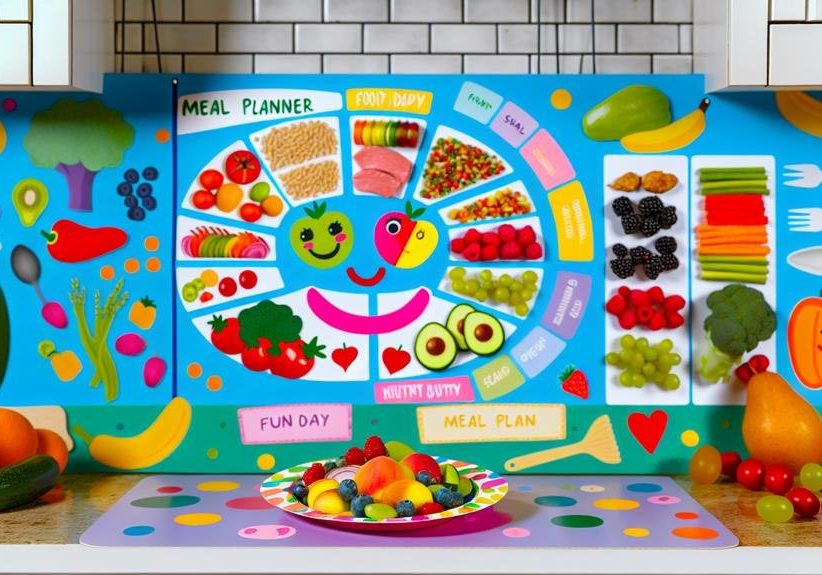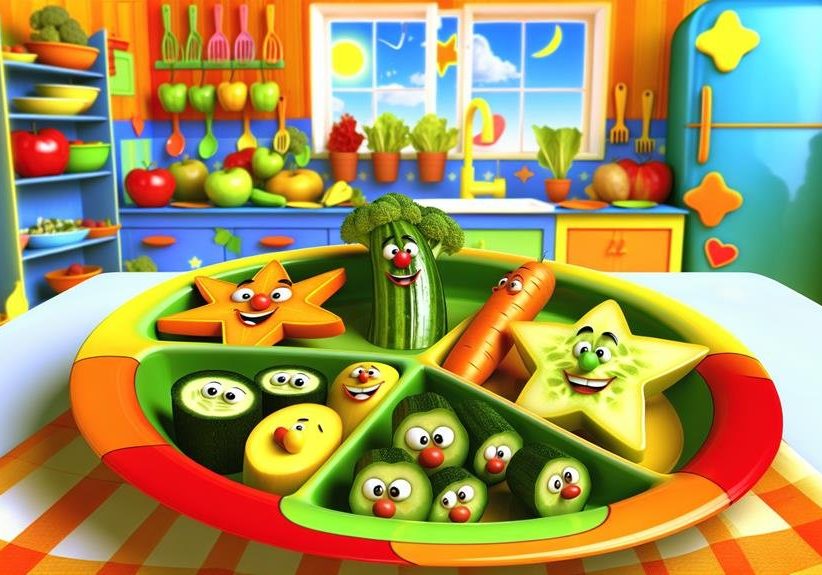Unlocking Meal Planning Secrets for Picky Eaters
You might not know that the key to successful meal planning for picky eaters often lies in the science of taste buds, which can be more sensitive in children than adults. As you grapple with the daily challenge of preparing meals that are both nutritious and appealing to your picky eater, it's important to recognize that a gentle and patient approach can make a significant difference.
By involving your child in the process, from grocery shopping to the actual cooking, you're not only teaching valuable life skills but also giving them a sense of control that can lead to more openness in trying new foods.
However, the real secret doesn't stop there; it intertwines with creativity in presentation and the strategic introduction of new flavors. Stick with me as we explore the subtle tactics that can transform your mealtime battles into a journey of culinary discovery for your little one.
Assessing Food Preferences
To effectively cater to a picky eater's needs, start by engaging in open dialogue to pinpoint their favored and less-preferred foods, thus establishing a foundation for a tailored meal plan. Observing how picky eaters react to different foods and noting patterns in their food preferences is crucial. You'll begin to understand which certain foods are consistently accepted and which are routinely rejected.
By offering a variety of options, you're not only gauging their food preferences but also subtly encouraging them to try new foods. Don't be disheartened if initially, they shy away from unfamiliar items; persistence is key. Experiment with different textures, flavors, and presentations, as these can significantly influence a child's willingness to eat.
Maintaining a food preference journal can be an invaluable tool. Document their reactions to the foods they try—this will help you track any emerging patterns and changes over time. Remember, a child's palette is constantly developing, and today's disliked food could become tomorrow's favorite.
Your goal is to create a nutrient-focused meal plan that respects the child's current food preferences while gently expanding their eating repertoire. This child-centric approach prioritizes their health and well-being, ensuring they receive the necessary nutrients despite their selective eating habits.
Building a Flexible Menu
When planning meals for picky eaters, it's essential to create a menu that can be personalized to accommodate individual tastes and preferences. A flexible menu isn't just about avoiding food fights; it's about providing balanced nutrition while respecting your child's palate.
Here's how you can build one:
- Embrace a customizable approach:
- Offer a variety of healthy toppings or sides so each person can tailor their plate.
- Use versatile base dishes like rice or pasta that everyone can enjoy, adding different sauces or proteins to suit varied tastes.
- Introduce new foods gently:
- Mix new ingredients with familiar favorites to reduce resistance.
- Present one new item at a time to avoid overwhelming your child.
Introducing New Foods
Introducing new foods to picky eaters can be a game-changer in expanding their palate and ensuring a balanced diet. When you're up against a picky eater, the key is to introduce new foods gradually. Start by creatively incorporating these foods into recipes they already like. Making a new vegetable the side dish to their favorite protein, for instance, can make trying new things less daunting.
Be persistent, even when a new food is rejected. It's common for children to need multiple exposures before they warm up to a new flavor or texture. Offer these foods on different days and meals, keeping in mind that variety is crucial for nutritional balance.
Understanding the root cause of picky eating is essential. If it's sensory sensitivity or a fear of new experiences at the table, tailor your approach to these needs. Making food fun, such as cutting veggies into fun shapes or involving your child in meal preparation, can make them more invested and willing to try new foods.
Mealtime Engagement Tactics
Get your kids excited about mealtime by inviting them to help with simple kitchen tasks like rinsing berries or stirring pancake batter, fostering a sense of involvement and curiosity in the foods they eat. This engagement is crucial; it gives them a sense of ownership over the meal, which can make them more likely to try new foods.
To effectively integrate mealtime engagement tactics, consider these points:
- Involve Kids in the Meal
- Start by serving small portions to avoid overwhelming them.
- Encourage them to participate in meal planning, perhaps choosing a healthy dish weekly.
- Promote Cooperation
- Team up to set the table, making sure everyone has a role.
- Share responsibilities, like watering a garden, to nurture their interest in where food comes from.
Make sure to keep the atmosphere positive and stress-free. Use creative presentations and themed dinners to make healthy eating fun. Remember, when kids in the meal preparation process, they're learning valuable lessons about nutrition and teamwork. These tactics not only make mealtime more engaging but also teach lifelong habits that contribute to their overall well-being.
Navigating Dietary Challenges
To successfully navigate dietary challenges in meal planning for picky eaters, it's essential to first identify each family member's unique dietary restrictions and preferences. Healthy eating for your family means recognizing that what works for one may not suit another. Your approach should be as diverse as their needs.
Researching alternative ingredients and cooking methods is vital. Suppose one of your children detests the taste of Brussels sprouts. In that case, you might try roasting them to enhance sweetness or incorporating them into dishes where they're less detectable yet still provide nutrients. Open communication within the family encourages everyone to express their dietary needs, paving the way for meal plans that everyone can enjoy.
Don't hesitate to seek advice from nutritionists or dietitians. They can offer guidance to ensure your meal plans are balanced, focusing on the nutritional needs of your picky eaters. Remember, healthy eating isn't just about the ingredients; it's about ensuring that the nutrients meet your child's growth requirements.
Lastly, be prepared to adapt. As kids grow, their tastes and dietary needs will change. Stay open-minded and flexible, ready to adjust recipes and meal plans. This way, navigating dietary challenges becomes an opportunity for creativity in your kitchen, rather than a hurdle.
Frequently Asked Questions
How Do You Meal Prep if You're a Picky Eater?
You should start with ingredient swaps to suit your tastes, explore new flavors gradually, try different texture variations, tweak recipes personally, and focus on creative presentation to make your meals both appealing and nutritious.
What Is the SOS Approach for Picky Eaters?
The SOS approach helps you tackle picky eating by emphasizing sensory exploration, food chaining, textural variations, taste education, and positive reinforcement, all while focusing on nutritious choices tailored to your child's needs.
What Is the Picky Eater Rule?
The Picky Eater Rule lets you cater to sensory preferences while expanding taste exploration through ingredient swaps, food pairing, and nudging them gently out of their comfort zone, all while focusing on nutrition.
How Do You Plan Meals When Everyone in Your Family Is a Picky Eater?
You'll want to blend family favorites with ingredient swaps, considering textures that appeal to all. Emphasize flavor exploration and interactive meals to engage your kids, ensuring meals are nutritious and child-friendly.
Conclusion
You've got this!
With a bit of creativity and patience, your picky eater can learn to love a variety of foods. Keep meals flexible, engage them in the cooking process, and introduce new flavors gradually.
Remember, it's about making mealtime fun and nutritious. Stay positive, and celebrate the small victories as your child takes steps towards a healthier, more adventurous diet.
Keep exploring and enjoying the journey together towards happy, balanced eating.










